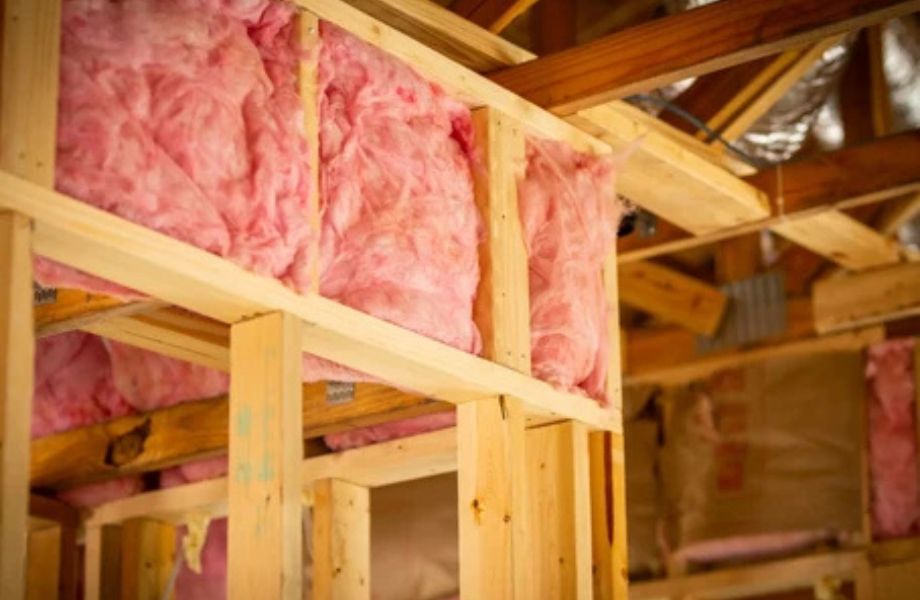Fiberglass insulation is one of the most widely used and trusted insulation materials in the construction industry. Known for its affordability, durability, and effectiveness, fiberglass insulation has been a staple in both residential and commercial buildings for decades. In this article, we’ll explore what fiberglass insulation is, its benefits, and why it continues to be a top choice for homeowners and builders alike.
What is Fiberglass Insulation?
Fiberglass insulation is made from fine glass fibers that are woven together to create a material that traps air, which in turn provides thermal insulation. It comes in various forms, including:
- Batts and Rolls: These are pre-cut sections of fiberglass insulation that are designed to fit between standard wall studs, floor joists, and ceiling rafters. They are often backed with a vapor barrier, such as paper or foil, to help control moisture.
- Loose-Fill: Also known as blown-in insulation, loose-fill fiberglass is composed of small particles that can be blown into spaces using special equipment. This type is ideal for filling irregularly shaped areas or retrofitting existing structures.
- Rigid Board: This form of fiberglass insulation is made into rigid panels that provide high thermal resistance and are used in areas that require added strength, such as exterior walls, roofs, and foundations.
Benefits of Fiberglass Insulation
- Cost-Effective Fiberglass insulation is one of the most affordable insulation options on the market. Its cost-effectiveness makes it a popular choice for both new construction and retrofitting projects, providing a high return on investment through energy savings.
- Excellent Thermal Performance Fiberglass insulation is highly effective at reducing heat transfer, keeping your home warm in the winter and cool in the summer. This helps to lower energy bills and maintain a comfortable indoor temperature year-round.
- Soundproofing The dense nature of fiberglass insulation makes it an effective sound barrier, helping to reduce noise transmission between rooms and from outside. This contributes to a quieter, more peaceful living environment.
- Fire Resistance Because fiberglass is made from glass, it is naturally non-combustible and provides an added layer of fire protection for your home. This makes it a safe choice for insulating areas that are prone to high temperatures.
- Moisture Resistance Fiberglass insulation does not absorb water, which helps to prevent mold and mildew growth. This is especially important in areas like basements, attics, and crawl spaces where moisture can be a concern.
- Versatility Fiberglass insulation is available in various forms and can be used in a wide range of applications, from walls and attics to HVAC systems and ductwork. Its versatility makes it suitable for nearly any insulation project.
Applications of Fiberglass Insulation
Fiberglass insulation can be used in many areas of a building:
- Walls: Batts and rolls of fiberglass insulation are commonly used to insulate walls, helping to maintain consistent indoor temperatures and reduce energy costs.
- Attics: Loose-fill fiberglass insulation is often used in attics, where it can easily fill gaps and cover irregular spaces to prevent heat loss.
- Crawl Spaces and Basements: Fiberglass insulation helps to protect these areas from moisture and temperature fluctuations, improving overall energy efficiency.
- Ductwork: Insulating HVAC ducts with fiberglass can prevent energy loss and improve the efficiency of heating and cooling systems.
Choosing the Right Fiberglass Insulation
When selecting fiberglass insulation for your project, consider the following:
- R-Value: The R-value measures the insulation’s resistance to heat flow. Choose a fiberglass product with an appropriate R-value for your climate and the specific area of your home that you are insulating.
- Installation Area: Depending on where you are installing the insulation, you may need batts, rolls, loose-fill, or rigid board. Each type has its own advantages depending on the application.
- Vapor Barrier: In areas prone to moisture, consider using fiberglass insulation with a built-in vapor barrier to help control condensation and prevent mold growth.
Fiberglass insulation is a time-tested, reliable option for improving the energy efficiency, comfort, and safety of your home. Its affordability, effectiveness, and versatility make it a popular choice for a wide range of insulation projects. Whether you’re building a new home, retrofitting an existing structure, or simply looking to reduce energy costs, fiberglass insulation offers a solution that delivers long-lasting benefits.
By choosing the right type of fiberglass insulation and ensuring proper installation, you can enjoy a more comfortable, energy-efficient home that stands up to the elements while keeping your energy bills in check. Consider consulting with a professional to determine the best fiberglass insulation options for your specific needs and start reaping the rewards of a well-insulated home.



